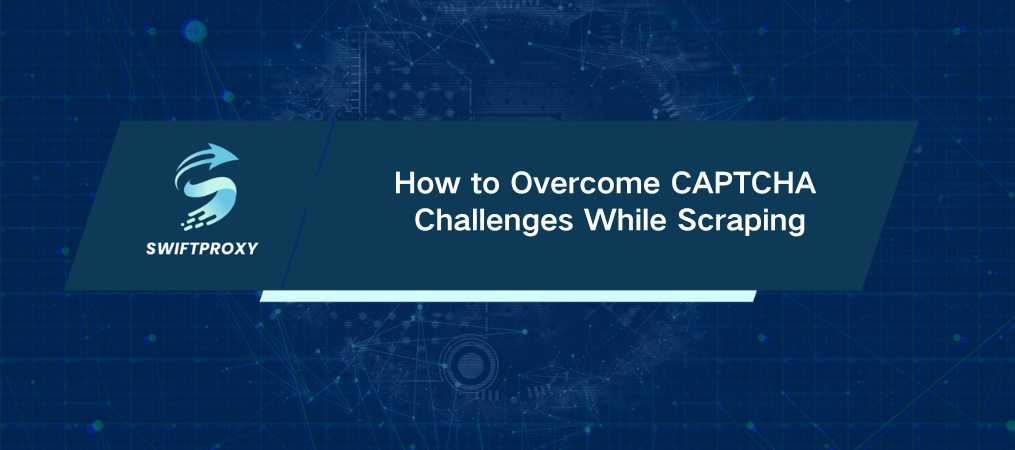How to Overcome CAPTCHA Challenges While Scraping

On January 16, 2025, Google rolled out an update that shook the web scraping world. Suddenly, CAPTCHAs were showing up more frequently, throwing a wrench in the works for many scraping operations. Whether you're scraping Google's search results for SEO, market research, or automated data gathering, you may have encountered these annoying CAPTCHA prompts. But don’t be quick to blame your proxy service. Here's what's really going on.
The Constant Battle Against Web Scraping
For years, web scraping has been a headache for Google. Scrapers mess with search results, violate terms of service, and compromise data integrity. To fight back, Google has continually fine-tuned its algorithms to detect and block suspicious automated activity. The January 2025 update marks a new level in this cat-and-mouse game, intensifying Google's efforts to block unwanted scraping and flagging questionable behavior with more precision.
Now, Google's algorithms don't just look at traffic from a specific IP—they examine a wider array of signals. Request frequency, traffic patterns, and user interactions all play a role. Whether you're using an SEO tool, a custom bot, or an automated scraping script, expect the chances of facing CAPTCHA to rise.
CAPTCHA: Google's First Line of Defense
CAPTCHA is Google's go-to mechanism for separating humans from bots. It's simple: when Google detects suspicious activity, it throws up a CAPTCHA to ensure the user is human. But don't assume a CAPTCHA prompt means your proxy quality is low. Here's why: Google's detection isn't solely based on the IP address. It's far more sophisticated.
Even the best proxies—those with rotation capabilities and geographical diversity—can still trigger Google's alarms. That's because Google looks at more than just your proxy's IP. It checks:
Request Frequency: Rapid-fire requests? Google's flagging that.
Traffic Patterns: Constant requests from the same IP? That's a red flag.
Geographical Location: Limited IP locations? More suspicion.
So, encountering a CAPTCHA doesn't mean your proxy is failing—it just means Google is getting smarter.
Why CAPTCHA Challenges Don't Equal Bad Proxies
Encountering CAPTCHA after investing in high-quality proxies can be frustrating. However, it's important to note that CAPTCHA prompts aren't a reflection of your proxy's performance. Even with top-tier proxies, if scraping activities resemble bot-like behavior, Google's algorithms will take notice.
Google doesn't just block bad IPs. It monitors patterns. If you're scraping too fast, too often, or from a narrow geographical range, Google will see that as suspicious and trigger a CAPTCHA. It's all part of their strategy to maintain the quality of their search results.
How to Minimize CAPTCHA Challenges
While CAPTCHAs are an inevitable part of scraping in 2025, there are several ways to reduce their frequency. By making these small adjustments, you can boost your scraping efficiency.
1. Utilize Rotating Proxies
Rotate your IPs frequently. This makes your requests seem more diverse and human-like, lowering the likelihood of triggering a CAPTCHA. Services like Swiftproxy offer a broad pool of rotating proxies to keep things fresh.
2. Manage Request Frequency
Google's systems are sensitive to how quickly you're making requests. Spread out your scraping sessions. Instead of hitting thousands of pages in minutes, aim for steady, gradual data collection over time.
3. Implement CAPTCHA-Solving Solutions
Use automated CAPTCHA-solving services. These solutions are increasingly effective and can save you time while maintaining the flow of your scraping process.
4. Vary Your IP Locations
Geographical variety is key. If your traffic is coming from a narrow range of locations, Google will notice. By using proxies from different regions, you can mimic the behavior of global users, which is harder for Google's algorithms to flag.
5. Make Your Scraping More Human-Like
Simulate human behavior. Rotate your user agents, randomize request intervals, and implement browser fingerprints. These tweaks make your activity look more natural, like real users browsing the web.
The Bottom Line
By combining these strategies with reliable proxy services, you'll minimize CAPTCHA interruptions and maximize the success of your scraping operations. Together, we can navigate Google's new anti-bot measures and keep your data collection process running smoothly.

















































